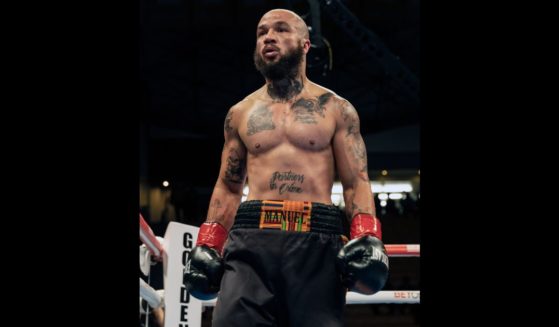Libs Forced to Back White Supremacist to Keep Billy Graham Statue Out of Capitol
[jwplayer OAimcq4B]
Many took to Twitter to express their disapproval of the state of North Carolina replacing the statue of early 20th century Democrat white supremacist Gov. Charles Aycock in the U.S. Capitol with world-renowned evangelist Billy Graham.
Tar Heel State legislators passed a law in 2015 calling for Aycock to be replaced by Graham, upon the Christian leader’s death.
Each state is permitted to have two statues of prominent deceased people from their state on display at the U.S. Capitol. North Carolina’s other statue is Zebulon B. Vance, a Confederate officer, who later became a two-time governor and U.S. senator.
The state’s Lt. Gov. Dan Forest officially made the request for the change from Aycock to Graham on Tuesday.
The Charlotte News & Observer reported that Aycock served one term as North Carolina’s governor from 1901 to 1905 and was a “segregationist and white supremacist.”
“Aycock used poll taxes, literacy tests and the grandfather clause to keep blacks from voting. He believed in an ‘unending separation of the races,’” according to the paper.
In his speech accepting the Democratic nomination for governor in 1900, Aycock spoke at length about why “negroes” should be denied the right to vote and argued the Republican Party in the state is controlled by its black constituency.
“Republicans are professing a special love for the poor and unlettered white man, but at the same time they assert that the law can make no distinction between him and the negro,” Aycock said. “The Democratic party takes the true, bold ground that a white man is superior to a negro and that the law of man will follow the law of God in recognition of it.”
By contrast, Graham engaged in the fight for racial equality in the 1950s and 60s in the United States.
The preacher insisted his crusades be integrated when in southern states. Former President Bill Clinton recounted on Tuesday that Graham demanded that his 1959 Little Rock, Arkansas event be integrated and threatened to pull out when city leaders resisted and go public with his reason why.
“The ground at the foot of the cross is level, and it touches my heart when I see whites standing shoulder to shoulder with blacks at the cross,” the Christian leader said.
Graham also became a strong supporter of Dr. Martin Luther King, Jr. in his fight for racial equality. On one occasion in 1962, Graham posted the bail money to have King released from a Georgia jail for protesting segregation laws.
The objections of those opposed to Graham’s statue replacing Aycock’s appear to center on not wanting to mix church and state, the pastor’s 1970s statement about Jews in the media and his views on homosexuality.
One said he expected statues of the Dalai Lama, Pope Francis and other religious figures to be added to the Capitol as well.
I expect that in the interest of fairness there will also be statues of the Dalai Lama and Pope Francis and Rabbi Denise Eger and Warith Deen Mohammed at the Capit–
What's that?
Oh, the people in power only like white Christians?
Well, that's not very Christian of them.
— Escape From D.C. (@SnakePlisskenDC) March 1, 2018
Another tweeted that Graham was “hateful” and “racist.”
Hateful, racist, eroded any Christian values from Christianity in the US. Damaged the separation of church and state.
Not one taxpayer dime. #NoBillyGraham #ShouldntLieInState— Liberally Thinking (@libthinking) March 1, 2018
Still another described Graham as a “homophobic anti-Semite.”
https://twitter.com/wordnerdy/status/968975578551476224
The charge of Antisemitism arises from a tapped conversation Graham had with then President Richard Nixon in the Oval Office in 1972 during which he is heard agreeing with the chief executive that Jews controlled much of the media.
“This stranglehold has got to be broken or the country’s going down the drain,” Graham said in response to Nixon complaining about the issue.
When the tape of the conversation was released 30 years later in 2002, Graham, who was a strong supporter of Israel, stated, “If it wasn’t on tape, I would not have believed it.”
“I guess I was trying to please,” he added. “I felt so badly about myself—I couldn’t believe it. I went to a meeting with Jewish leaders and I told them I would crawl to them to ask their forgiveness.”
The day after the evangelist’s death, NBC News ran a story headling that Graham “leaves a painful legacy for LGBTQ people.”
Though noting Graham had “few specific words” about those who identify as LGBTQ, NBC’s John Paul Brammer hit the Christian for his views on marriage and for conjecturing in 1993 during a crusade in Ohio that AIDS might be “the judgement of God.”
Graham quickly retracted those remarks, Brammer noted. “To say God has judged people with AIDS would be very wrong and very cruel. I would like to say that I am very sorry for what I said,” he stated.
Brammer also quoted a religion professor dinging Graham for creating the foundation for the Christian Right to come together and begin engaging in the political process in the 1970s.
According to The Christian Post, during the course of his lifetime, approximately 215 million people heard Graham preach the salvation message in person in over 185 countries, with millions more reached through television, films and webcasts.
Graham held the last of his trademark crusades in New York City in 2005, which followed one the previous year in Los Angeles, wrapping up a 60-year career that included over 400 such events worldwide.
“America’s Pastor’s” influence was so profound and lasting, he still made the top five in Gallup’s most influential men in December, marking his 61st appearance in the survey.
Graham became the fourth person in U.S. history to lie in honor in the Capitol Rotunda on Wednesday.
In his remarks at a ceremony in the Rotunda honoring Graham, President Trump said, “Everywhere he went, Reverend Graham delivered the same beautiful message: God loves you. That was his message. God loves you.”
.@POTUS: "Today we say a prayer for our country, that all across this land the Lord will raise up men and women like #BillyGraham to spread a message of love and hope to every precious child of God." https://t.co/A4pMLnwjTN pic.twitter.com/7FMg5ZbCP3
— Fox News (@FoxNews) February 28, 2018
He concluded stating, “(T)oday we say a prayer for our country, that all across this land the Lord will raise up men and women like Billy Graham to spread a message of love and hope to every precious child of God.”
If approved by the Capitol architect, Graham will become the third religious figure’s statue on the display joining Mormon leader Brigham Young from Utah and Catholic Priest Father Damien from Hawaii.
Share this story on Facebook if you think that “separation of church and state” is a sorry excuse not to honor Billy Graham in the U.S. Capitol building.
Truth and Accuracy
We are committed to truth and accuracy in all of our journalism. Read our editorial standards.












